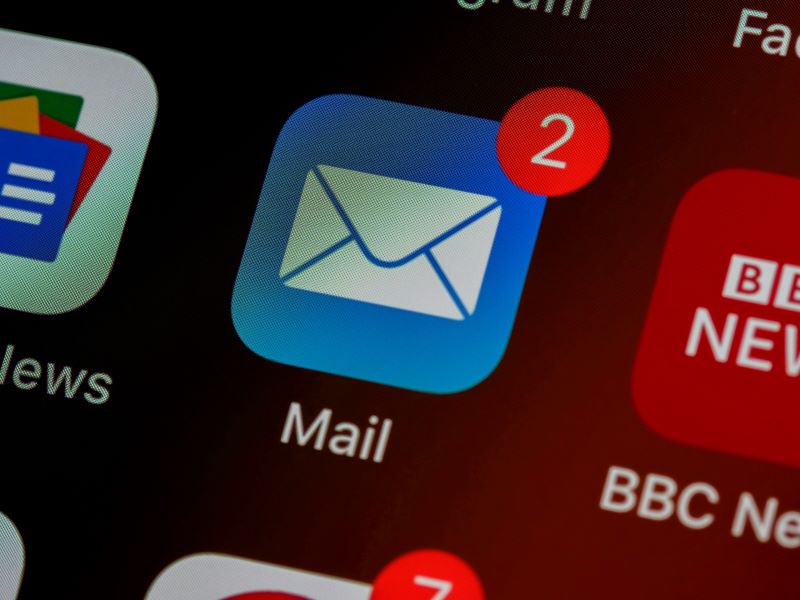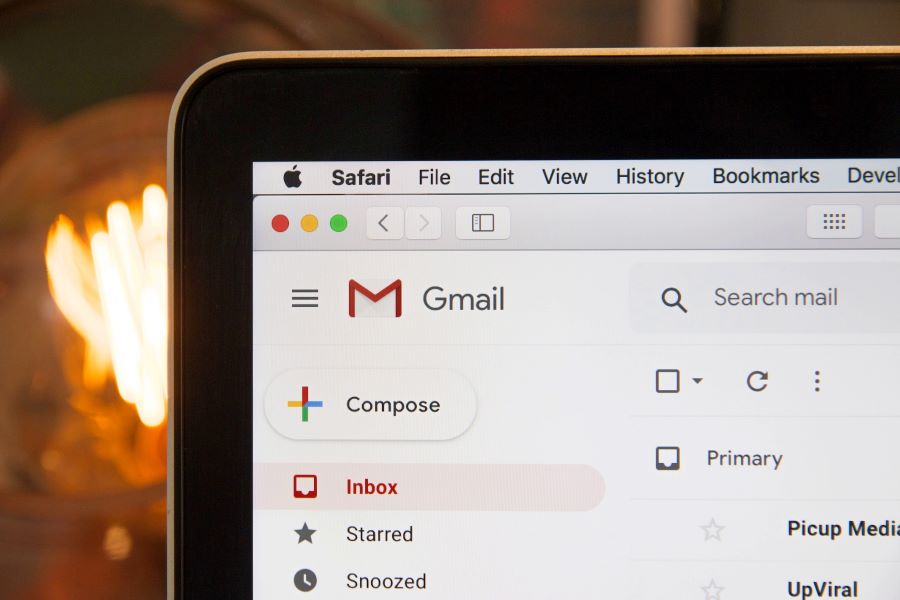
Looking to take your marketing efforts to the next level?
Unlock the power of email marketing and discover how to build and grow your email list in Australia.
Whether you’re a small business owner, a marketer, or an entrepreneur, having a strong email list is crucial for driving conversions, building customer loyalty, and ultimately growing your business.
In this article, we will delve into the strategies and best practices for building an email list specifically tailored to the Australian market.
From understanding the legal requirements to implementing lead generation tactics and optimising your email campaigns, we will provide you with the essential insights and practical tips you need to succeed.
Don’t miss out on the incredible potential of email marketing – let’s unlock its power together and watch your business thrive in the Australian market.
Why is Building an Email List Crucial for Your Business?
Building an email list is a fundamental aspect of any successful marketing strategy. It allows you to directly reach out to your target audience, nurture relationships, and convert leads into customers.
Unlike social media or search engine algorithms, you have full control over your email list. This means that you can communicate with your subscribers whenever you want, without relying on third-party platforms.
An email list is also a valuable asset for your business. It provides you with a direct line of communication with your audience, enabling you to promote your products or services, share valuable content, and build trust and credibility. Additionally, email marketing has a high return on investment (ROI), making it a cost-effective way to reach your target market.
To start building your email list, you need to consider your target audience and their preferences.
What kind of content would they find valuable? What are their pain points and challenges?
By understanding your audience’s needs, you can create compelling content that encourages them to subscribe to your email list.
Benefits of Email Marketing in Australia
Email marketing offers numerous benefits for businesses operating in the Australian market.
First and foremost, it allows you to reach a wide audience at a relatively low cost. Compared to traditional marketing methods, such as print advertising or direct mail, email marketing is more cost effective and provides a higher return on investment.
Moreover, email marketing allows for personalised communication. You can segment your email list based on various criteria such as demographics, interests, or purchasing behaviour. This level of personalisation enables you to send targeted messages to specific segments of your audience, increasing the likelihood of engagement and conversions.
Another advantage of email marketing in Australia is its ability to drive website traffic. By including links to your website or blog in your email campaigns, you can direct subscribers to your online platforms and encourage them to take desired actions, such as making a purchase or signing up for a webinar.
Additionally, email marketing provides measurable results. With the help of email marketing platforms, you can track open rates, click-through rates, and conversion rates. This data allows you to analyze the effectiveness of your campaigns and make data-driven decisions to optimise your email marketing strategy.

Understanding Email Marketing Regulations in Australia
Before you start building your email list, it’s essential to familiarise yourself with the email marketing regulations in Australia. The Spam Act of 2003 governs commercial email communications in the country and sets out the rules for sending unsolicited emails.
Under the Spam Act, you must obtain consent from individuals before adding them to your email list. This consent can be expressed or inferred.
Express consent means that the individual has explicitly agreed to receive emails from you, while inferred consent can be assumed based on an existing business relationship or the conspicuous publication of an email address.
It’s important to note that you must provide a clear and easy way for individuals to unsubscribe from your email list. Every email you send should include an unsubscribe link that allows recipients to opt out of future communications.
By following these regulations, you not only comply with the law but also build trust with your subscribers. Respecting their privacy and preferences will help you maintain a positive reputation and ensure that your email marketing efforts are effective.
How Do You Create an Effective Lead Magnet?
To entice visitors to join your email list, you need to offer them something of value in exchange for their contact information. This is where lead magnets come into play. A lead magnet is a free resource or incentive that you provide to your audience in exchange for their email address.
When creating a lead magnet, it’s crucial to offer something that aligns with your audience’s interests and provides a solution to their problems. This could be an eBook, a checklist, a template, a webinar, or a free trial of your product or service.
The key is to make it valuable and relevant to your target market.
To ensure the success of your lead magnet, you should also optimise its design and copy. Use compelling headlines, persuasive copywriting, and eye-catching visuals to grab your visitors’ attention and convince them to take action.
Remember, your lead magnet represents the value you provide, so make it irresistible.
Once you have created your lead magnet, you can promote it through various channels such as your website, blog, social media, or paid advertising. The goal is to drive targeted traffic to your lead magnet and capture email addresses from interested individuals.
Strategies for Driving Traffic and Capturing Email Addresses
Now that you have your lead magnet in place, it’s time to focus on driving traffic and capturing email addresses. There are several strategies you can use to achieve this:
- Optimise your website for conversions: Make sure your website has clear and prominent opt-in forms where visitors can subscribe to your email list. Place these forms strategically on your homepage, blog posts, and landing pages to maximise visibility.
- Create compelling landing pages: When promoting your lead magnet, direct visitors to dedicated landing pages that focus solely on the offer. These pages should have a persuasive copy, strong calls to action, and clear instructions on how to sign up.
- Optimise your content for lead generation: Incorporate lead capture forms within your blog posts, videos, or podcasts to capture email addresses from engaged readers or viewers. Offer additional resources or bonus content to incentivize sign-ups.
- Run targeted advertising campaigns: Utilize paid advertising platforms, such as Google Ads or Facebook Ads, to drive traffic to your lead magnet. Ensure that your ads are highly targeted to reach your ideal audience and encourage them to subscribe.
- Collaborate with influencers or complementary businesses: Partner with influencers or businesses that have a similar target audience to yours. Offer them a commission or a mutually beneficial partnership to promote your lead magnet to their audience.
By implementing these strategies, you can increase your website traffic, capture more email addresses, and grow your email list in Australia.
Best Practices for Email List Segmentation
Segmentation is a powerful technique that allows you to divide your email list into smaller, more targeted groups. By segmenting your list, you can send personalized and relevant content to specific segments, resulting in higher engagement and conversions.
Here are some best practices for email list segmentation:
- Demographics: Segment your list based on demographic information such as age, gender, location, or occupation. This allows you to tailor your content to specific groups and address their unique needs and preferences.
- Interests: Group subscribers based on their interests or preferences. This could be determined through their website behaviour, past purchases, or survey responses. By sending content that aligns with their interests, you increase the chances of engagement.
- Engagement level: Segment your list based on the level of engagement. Identify subscribers who consistently open and click on your emails and those who haven’t engaged in a while. This allows you to send re-engagement campaigns or exclusive content to keep your audience interested.
- Purchase behaviour: If you have an ecommerce business, segment your list based on purchase behaviour. Identify high-value customers, frequent buyers, or those who have abandoned their shopping carts. Tailor your emails to encourage repeat purchases or recover abandoned sales.
- Lifecycle stage: Segment your list based on where subscribers are in their customer journey. Are they new leads, active customers, or past customers? Send targeted emails that nurture leads, retain customers, or win back lapsed customers.
By implementing email list segmentation, you can deliver more personalized and targeted content to your subscribers, resulting in higher open rates, click-through rates, and conversions.

Crafting Compelling and Personalised Email Content
Once you have segmented your email list, it’s time to craft compelling and personalised email content. Here are some tips to keep in mind:
- Personalisation: Address subscribers by their name and tailor the content to their specific segment. Use the data you have collected to personalise subject lines, greetings, and the body of your emails. This creates a sense of connection and relevance.
- Clear and concise messaging: Keep your emails concise and to the point. Use short paragraphs, bullet points, and headings to improve readability. Make sure your message is clear and easy to understand, without any jargon or unnecessary fluff.
- Compelling subject lines: Your subject line is the first thing subscribers see in their inbox, so make it compelling and attention-grabbing. Use action words, create a sense of urgency, or ask a question to pique curiosity and encourage openness.
- Engaging call-to-action: Every email should have a clear and compelling call-to-action (CTA). Use action verbs, highlight the benefits, and make it easy for subscribers to take the desired action. Use buttons or hyperlinks to direct them to a specific landing page or offer.
- Mobile optimisation: With the majority of emails being opened on mobile devices, it’s crucial to optimise your emails for mobile viewing. Ensure that your emails are responsive, easy to read, and have clickable elements that work well on small screens.
By crafting compelling and personalized email content, you can increase engagement, click-through rates, and ultimately drive conversions.
Choosing the Right Email Marketing Platform
To effectively manage and automate your email marketing campaigns, it’s important to choose the right email marketing platform. Here are some factors to consider when selecting a platform:
- Ease of use: Look for an email marketing platform that is user-friendly and intuitive. It should have a drag-and-drop editor, pre-designed templates, and an easy-to-navigate interface. This allows you to create and send emails without the need for coding or design skills.
- Automation features: Automation is a vital feature for email marketing. Look for a platform that allows you to set up automated campaigns such as welcome emails, abandoned cart reminders, or birthday greetings. Automation saves time and ensures timely and relevant communication with your subscribers.
- Segmentation capabilities: Choose a platform that offers robust segmentation capabilities. It should allow you to easily create and manage segments based on various criteria such as demographics, interests, or engagement level. This enables you to send targeted emails to specific segments of your audience.
- Integration options: Consider the integration options the platform offers. It should seamlessly integrate with your existing tools such as CRM systems, ecommerce platforms, or lead generation plugins. This ensures a smooth flow of data and allows for personalised and automated campaigns.
- Analytics and reporting: Look for a platform that provides detailed analytics and reporting features. It should track key metrics such as open rates, click-through rates, and conversions. This data allows you to measure the effectiveness of your campaigns and make data-driven decisions.
By choosing the right email marketing platform, you can streamline your email marketing efforts, save time, and optimise your campaigns for success.
Analysing and Optimising Your Email Marketing Campaigns
To ensure the success of your email marketing campaigns, it’s crucial to analyse and optimise your efforts. Here are some steps to follow:
- Track key metrics: Use the analytics provided by your email marketing platform to track key metrics such as open rates, click-through rates, and conversion rates. Analyse these metrics regularly to identify trends and patterns.
- A/B testing: Test different elements of your emails to determine what works best for your audience. This could include testing subject lines, CTAs, visuals, or email copy. Use A/B testing to compare the performance of different variations and optimise your campaigns accordingly.
- Segmentation analysis: Monitor the performance of your segmented lists. Are certain segments more engaged than others? Analyse the open rates, click-through rates, and conversions for each segment and adjust your content and messaging accordingly.
- Email deliverability: Keep an eye on your email deliverability rates. Ensure that your emails are reaching the inbox and not getting flagged as spam. Regularly clean your email list by removing inactive or non-engaging subscribers to maintain a healthy sender reputation.
- Email frequency: Monitor the impact of your email frequency on engagement. Are you sending too many emails and causing subscriber fatigue? Or are you not sending enough and missing out on opportunities? Find the right balance that keeps your audience engaged without overwhelming them.
By analysing and optimising your email marketing campaigns, you can continuously improve your results and achieve higher engagement, conversions, and customer loyalty.
Growing Your Email List Organically
While lead generation tactics can help you capture email addresses, it’s also important to focus on growing your email list organically.
Here are some strategies to consider:
- Content marketing: Create valuable and informative content that attracts your target audience. Publish blog posts, videos, or podcasts that address their pain points and provide solutions. Include opt-in forms within your content to capture email addresses from engaged readers.
- Guest blogging: Write guest posts for popular blogs in your industry. This allows you to reach a wider audience and establish yourself as an expert in your field. Include a call-to-action in your author bio that directs readers to your lead magnet or website.
- Webinars and events: Host webinars or participate in industry events to showcase your expertise. Require attendees to provide their email addresses to register for the event or access exclusive content. This allows you to capture leads who are interested in your niche.
- Referral programs: Encourage your existing subscribers to refer their friends or colleagues to join your email list. Offer incentives such as exclusive content, discounts, or rewards for successful referrals. This leverages the power of word-of-mouth marketing and expands your reach.
- Optimisation and testing: Continuously optimise your landing pages, opt-in forms, and lead magnets. Test different variations to determine what resonates best with your audience. Make it easy for visitors to subscribe by minimising form fields and providing clear instructions.

Building an Email List with DesignQ
Building and nurturing an engaged email list is essential for the growth and success of your business.
At DesignQ, our dedicated team of email marketing specialists is committed to helping you supercharge your business by building a high-quality email list and executing effective email campaigns. Take action today and unlock the potential of email marketing.
Contact us now to get started on transforming your email list into a powerful marketing asset.
Conclusion
In the digital age, email marketing remains one of the most effective and powerful tools for businesses to connect with their audience, nurture leads, and drive conversions.
At DesignQ, we understand the value of building an engaged email list that not only expands your reach but also establishes a direct line of communication with your customers.










